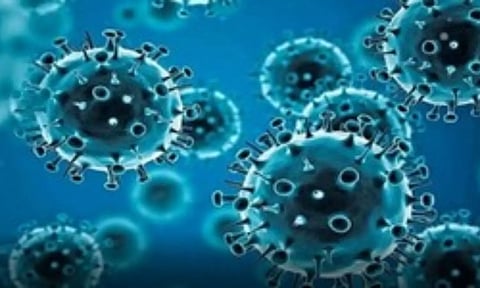

LONDON: A team of German researchers has discovered various "protective switches" in the coronavirus that shield it from attacks by the immune system.
The researchers identified two previously unknown chemical protective switches in the virus' main "protease" -- a crucial protein of the coronavirus. The most important drug against Covid-19, called Paxlovid, targets this protein. The virus uses its main protease to cut out the other virus proteins in our infected cells, thus driving its own replication. It uses the amino acid cysteine to do this.
"From a chemical point of view, this could be an Achilles heel for the coronavirus, as cysteines can be destroyed by highly reactive oxygen radicals, which our immune system uses to fight viruses," explained Professor Kai Tittmann, Molecular Enzymology Research Group at Gottingen University, who led and coordinated the study.
The protective switches mean the virus' main protease is protected against the immune system's bombardment by oxygen radicals: The protein is stabilised by one cysteine forming a disulfide with an adjacent cysteine via two sulphur atoms.
This prevents the cysteine from being destroyed. At the same time, a bridge known as SONOS connects three parts of the protein between sulphur atoms, oxygen atoms, and a nitrogen atom. This prevents radicals from damaging its three-dimensional structure.
"It is fascinating to see how chemically elegant and effective the coronavirus is in defending itself against the immune system. Interestingly, a coronavirus discovered earlier -- severe acute respiratory syndrome, also known as SARS-CoV-1 -- which triggered the 2002 to 2004 outbreak, also has these protective switches. This is the first time this has been shown," Tittmann said. The results are published in Nature Communications.
With the chemical blueprint in hand, the team further set about searching for molecules that can bind precisely to the "protective switches," therefore inhibiting the virus' main protease. They identified such molecules not only in the test tube, but also in infected cells.
"This type of molecule opens up the potential for new therapeutic interventions which will stop coronaviruses in their tracks," said Lisa-Marie Funk, also from Gottingen University's Molecular Enzymology research group.